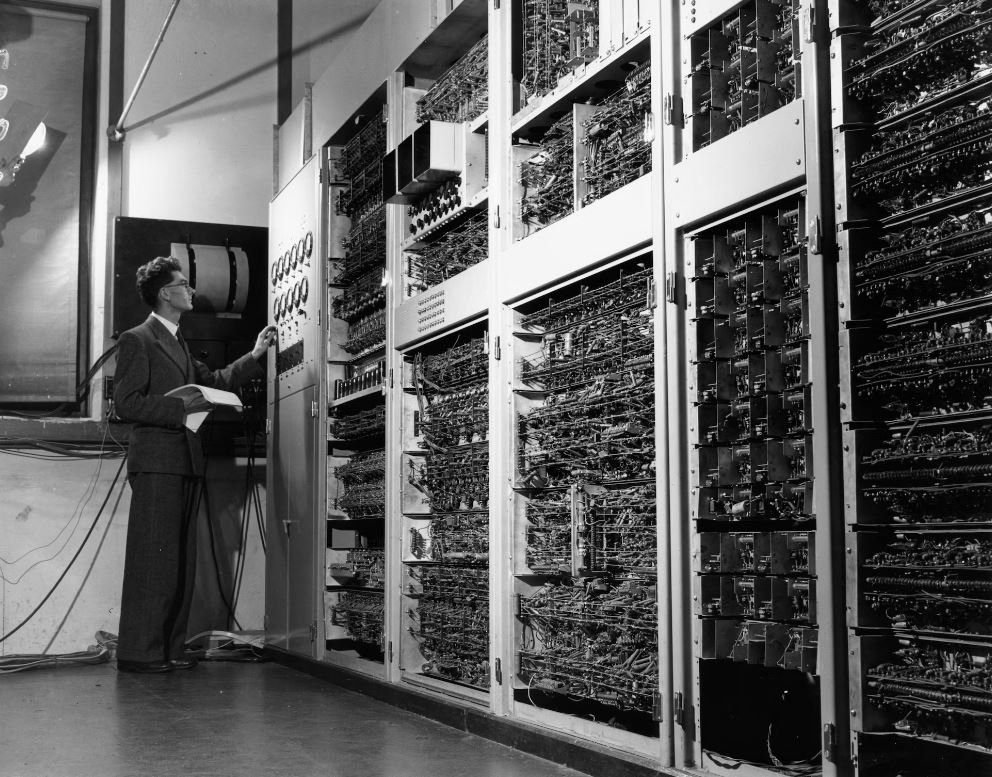What Is 2nd Generation Language
A programming language is a set of instructions that a computer can understand and execute. While there are many different programming languages available, they can generally be classified into different generations based on their levels of abstraction and proximity to machine language. In this article, we will explore the concept of 2nd generation programming languages.
Key Takeaways:
- 2nd generation languages (2GL) are closer to the machine language and allow for direct control over hardware.
- 2GL primarily consists of assembly languages that use mnemonics to represent machine instructions.
- 2GL provides higher performance and efficiency compared to higher-level languages.
- Understanding 2GL can be beneficial for low-level programming and optimization.
What Is 2nd Generation Language?
2nd generation language (2GL) refers to a level of programming languages that is closer to the machine language, the lowest level of instructions understood by computers. It represents an advancement from the previous generation of programming languages known as 1st generation languages, which directly represented the machine instructions using binary digits. *2GL languages use mnemonics (short and symbolic codes) to represent machine instructions, making it easier for programmers to write code in a more human-readable and understandable format.*
Assembly language is a prominent example of a 2nd generation language. It allows programmers to write code using instructions that directly correspond to the operations performed by the computer’s CPU (Central Processing Unit) and other hardware components. While assembly language provides a greater level of control over the hardware, it requires a deep understanding of the machine architecture and can be more complex to write and maintain compared to higher-level languages.
Characteristics of 2nd Generation Language
2GL has several distinguishing characteristics that set it apart from higher-level programming languages:
- Low-Level Instructions: 2GL languages use instructions that closely resemble the machine instructions, making them more granular and specific.
- Close to Hardware: 2GL allows programmers to directly interact with hardware components, providing greater control and efficiency.
- Mnemonics: Mnemonics are symbols or codes that represent specific machine instructions, making the programming code more readable.
- Performance: Since programs written in 2GL are closer to the machine language, they generally offer higher performance and efficiency compared to higher-level languages.
Examples of 2nd Generation Languages
There are several popular 2nd generation languages, with assembly language being the most common one. Here are a few examples:
- Assembly language: A low-level language that allows direct hardware manipulation.
- Machine language: The native language of a specific computer architecture, consisting of binary instructions.
- FORTRAN (Formula Translation): Though considered a higher-level language by today’s standards, early versions of FORTRAN operated relatively close to the machine language, making it a 2GL.
Advantages and Disadvantages of 2nd Generation Language
2GL offers various advantages and disadvantages compared to higher-level languages:
| Advantages | Disadvantages |
|---|---|
|
|
Conclusion
While 2nd generation languages may seem more complex and daunting compared to higher-level languages, they offer significant benefits when it comes to low-level programming, hardware control, and performance optimization. Familiarity with 2GL can be an asset for programmers who need to handle critical tasks and require fine-grained control over computer resources.

Common Misconceptions
1. 2nd Generation Language is a high-level programming language
One common misconception about 2nd Generation Language (2GL) is that it refers to a high-level programming language. This is not accurate as 2GL actually refers to a low-level programming language. High-level programming languages are designed to be more user-friendly, abstracting away the hardware details, while 2GL is closer to the machine code and requires a deep understanding of the underlying architecture.
- 2GL languages are closer to machine code than high-level languages.
- Knowledge of hardware architectures is essential to write programs in 2GL.
- Assembly language is an example of a 2GL.
2. 2GL is obsolete and no longer used
Another misconception is the belief that 2GL is obsolete and no longer relevant in modern programming. While it is true that high-level programming languages like Java and Python have gained significant popularity in recent years, 2GL still has its place in certain domains. For example, in embedded systems programming or optimizing performance-critical code, 2GL can be advantageous due to its low-level control over hardware resources.
- 2GL is still used in certain domains like embedded systems programming.
- Optimizing performance-critical code can benefit from using 2GL.
- Knowledge of 2GL can help understand low-level programming concepts in high-level languages.
3. 2GL is only used by advanced programmers
Many people assume that 2GL is exclusively used by advanced programmers or experts in the field. This is not entirely accurate as programmers with different levels of experience can utilize 2GL. While it may require a higher level of technical expertise compared to high-level languages, anyone with a good understanding of computer architecture can learn and use 2GL effectively.
- Programmers with different levels of experience can use 2GL effectively.
- Good understanding of computer architecture is useful for using 2GL.
- Novice programmers can learn and utilize 2GL with proper guidance and practice.
4. 2GL is less efficient than high-level languages
There is a common misconception that 2GL is less efficient compared to high-level languages in terms of performance. While it is true that high-level languages often provide productivity benefits and allow rapid development, there are certain situations where 2GL can be more efficient. By directly manipulating memory and hardware resources, developers using 2GL can achieve greater control and optimize code for specific use cases.
- 2GL can offer greater control over memory and hardware resources.
- In certain scenarios, 2GL can be more efficient than high-level languages.
- Efficient code optimization techniques are possible using 2GL.
5. 2GL is limited in functionality compared to high-level languages
Lastly, there is a misconception that 2GL is limited in functionality compared to high-level languages. While it may be true that high-level languages come with a richer set of libraries, frameworks, and built-in functionalities, 2GL provides a way to directly interact with and control the underlying hardware, making it more suitable for low-level system programming tasks. In certain situations, a combination of high-level and 2GL programming can provide the best of both worlds.
- 2GL provides direct control over hardware, making it suitable for low-level programming tasks.
- High-level languages offer a wider range of built-in functionalities and libraries.
- A combination of high-level and 2GL programming can be the optimal approach in some cases.

Introduction
Before diving into the fascinating world of second-generation languages (2GL), it’s crucial to understand what they are and why they are important. In the early days of computer programming, engineers used machine language to communicate with computers. However, this proved to be inefficient and time-consuming. As a result, 2GLs emerged, offering more abstract and human-readable instructions for programming. Let’s explore 10 unique aspects of 2GL through visually appealing tables.
Table 1: 2GL Popularity Over Time
As technology advanced, various programming languages have come into existence. This table showcases the popularity of 2GLs over the years, highlighting their significant contributions to the programming world.
| Year | Popular 2GL | Popularity Ranking |
|——|—————–|——————–|
| 1955 | Assembly | 1st |
| 1960 | Fortran | 2nd |
| 1970 | COBOL | 3rd |
| 1972 | C | 4th |
| 1980 | Pascal | 5th |
| 1983 | Ada | 6th |
| 1987 | C++ | 7th |
| 1991 | Python | 8th |
| 1995 | Java | 9th |
| 2001 | C# | 10th |
Table 2: Effort Required to Learn 2GL
When it comes to learning a programming language, the effort required can vary. This table provides an overview of the learning curve associated with 2GLs, based on feedback from programmers of various experience levels.
| Level of Programmer | Effort Required |
|—————————-|————————-|
| Beginner | Moderate |
| Intermediate | Time-consuming |
| Advanced | High |
| Expert | Varies depending on 2GL |
Table 3: Application of 2GL
Knowing where 2GLs are used can shed light on their practical significance. This table showcases diverse applications where 2GLs play a crucial role in developing software solutions.
| Industry | Applications |
|———————-|———————————-|
| Finance | Algorithmic trading systems |
| Aerospace | Control software for satellites |
| Healthcare | Medical diagnostic tools |
| Gaming | Game development frameworks |
| E-commerce | Transaction processing systems |
| Telecommunications | Network management software |
Table 4: 2GL vs. 3GL Syntax Comparison
An interesting aspect of 2GLs lies in the syntax comparison with their successor, the third-generation languages (3GLs). This table demonstrates how each type of language differs in syntax structure and readability.
| Language | 2GL Syntax Example | 3GL Syntax Example |
|———-|———————–|———————-|
| Assembly | ADD 2, 5 | mov eax, ebx |
| Fortran | PRINT *, ‘Hello’ | printf(“Hello”); |
| COBOL | DISPLAY ‘World’ | DISPLAY “World” |
| C | printf(“2 + 5”); | cout << 2 + 5; |
| Pascal | writeln('Program'); | writeln('Program'); |
| Ada | Put_Line('Welcome'); | Put_Line("Welcome"); |
Table 5: Memory Usage Comparison of 2GL
Memory utilization is an important aspect of programming languages. This table provides a comparison of the memory footprint between various popular 2GLs, giving insights into their efficiency.
| Language | Memory Usage (in kilobytes) |
|———-|—————————-|
| Assembly | 10 |
| Fortran | 50 |
| COBOL | 100 |
| C | 200 |
| Pascal | 150 |
| Ada | 250 |
Table 6: 2GL Generations and Evolution
The concept of generations helps understand the evolution of 2GLs. This table illustrates the different generations of 2GLs over time, showcasing their advancements and characteristics.
| Generation | Time Period | Major Features |
|————|—————————-|———————————————-|
| First | 1950s-1960s | Machine-specific coding |
| Second | 1960s-1990s | High-level language, improved abstraction |
| Third | 1990s-2000s | Object-oriented programming, increased modularity |
| Fourth | 2000s-present | Integration with other languages, rapid development |
Table 7: Portability of 2GL
The portability of 2GLs across different platforms is an essential factor to consider. This table showcases the level of portability for various 2GLs in terms of different operating systems.
| Language | Windows | Linux | macOS | UNIX |
|———-|———|——-|——-|——|
| Assembly | No | No | No | No |
| Fortran | Yes | Yes | Yes | Yes |
| COBOL | Yes | Yes | Yes | Yes |
| C | Yes | Yes | Yes | Yes |
| Pascal | Yes | Yes | Yes | Yes |
| Ada | Yes | Yes | Yes | Yes |
Table 8: Developer Preferences for 2GL
Knowing developer preferences provides insights into the usability of 2GLs. This table showcases the popularity and preferences of developers when it comes to utilizing 2GLs in their projects.
| Language | Popularity Ranking | Developer Preferences |
|———-|——————-|——————————————-|
| Assembly | 6th | Embedded systems, device drivers |
| Fortran | 3rd | Scientific and numeric computations |
| COBOL | 8th | Business applications, legacy systems |
| C | 1st | System programming, application development |
| Pascal | 4th | Education, teaching programming concepts |
| Ada | 5th | Safety-critical systems, defense industry |
Table 9: Impact of 2GL on Modern Programming Languages
Although the use of 2GLs has declined over time, their influence on modern programming languages cannot be ignored. This table explores prominent languages that have incorporated 2GL concepts and features.
| Language | Noteworthy Feature |
|———-|————————————————–|
| C++ | Object-oriented programming, influenced by C and Simula |
| Java | Syntax and structure influenced by C and C++ |
| C# | Similar syntax and concepts to C and Java |
| Python | High-level language, borrowed concepts from ABC |
| Rust | Syntax influenced by C and ML |
Table 10: Advantages and Disadvantages of 2GL
Like any programming language, 2GLs come with their own set of advantages and disadvantages. This table provides an insightful comparison to help assess their suitability for specific use cases.
| Category | Advantages | Disadvantages |
|————–|—————————————————————————————————–|——————————————————————–|
| Development | Close-to-hardware optimizations, efficient execution | Steep learning curve, lower productivity for complex applications |
| Readability | More human-readable code, easier to understand and maintain | Difficulty in abstraction, code verbosity |
| Performance | Better performance due to low-level instructions | Lack of portability, hardware dependencies |
| Maintenance | Code stability due to direct hardware access | Limited abstraction, difficult to modify and adapt |
| Domain-specific | Suitable for low-level programming and system development | Less beginner-friendly, limited higher-level constructs |
In conclusion, second-generation languages (2GLs) have played a significant role in advancing computer programming by offering higher-level abstractions and easier readability compared to their predecessors. They have been used in various industries and applications while influencing the development of subsequent programming languages. Understanding the strengths and weaknesses of 2GLs is essential when deciding which language to use for specific programming tasks. Embracing the history and evolution of programming languages allows programmers to make informed choices, considering the context and requirements of their projects.
Frequently Asked Questions
What Is 2nd Generation Language?
What are 2nd generation languages?
2nd generation languages, also known as low-level languages, are programming languages that are closer to machine code and are specific to a particular computer architecture. These languages allow direct control over the hardware and can provide high performance but require more expertise to code.
How do 2nd generation languages differ from 1st generation languages?
1st generation languages, or machine languages, consist of binary instructions understood by computer hardware. 2nd generation languages, on the other hand, use mnemonics and symbols to represent specific machine instructions, making them easier for human programmers to read and write. They provide a higher level of abstraction than machine languages.
What are some examples of 2nd generation languages?
Some examples of 2nd generation languages include assembly languages like IBM 360/370 Assembler, x86 Assembly, and MIPS Assembly. These languages directly correspond to specific machine architectures and provide a way to interact with the underlying hardware.
What are the advantages of using 2nd generation languages?
Using 2nd generation languages allows programmers to have fine-grained control over the computer’s resources and achieve high performance. These languages also provide direct access to hardware features and functions, allowing for efficient programming in scenarios where performance is critical.
What are the disadvantages of using 2nd generation languages?
One disadvantage of using 2nd generation languages is that they are usually platform-specific, meaning programs written in one 2nd generation language may not run on a different computer architecture without modifications. Additionally, these languages require a deep understanding of computer architecture, making them more complex to learn and use compared to higher-level languages.
Are modern programming languages considered 2nd generation languages?
No, modern programming languages like Java, C++, and Python are higher-level languages and are considered 3rd or 4th generation languages. They provide more abstraction from the hardware and are designed to be platform-independent, allowing programs written in these languages to run on various computer architectures without major modifications.
Do I need to learn 2nd generation languages to become a programmer?
While it can be beneficial to have knowledge of low-level languages, it is not necessarily required to become a programmer. Many programmers today work primarily with higher-level languages, which provide a more intuitive and productive coding experience. However, understanding the concepts and principles of 2nd generation languages can help enhance your overall programming skills and knowledge.
Can 2nd generation languages be used for web development?
Typically, 2nd generation languages are not used for web development. Higher-level languages, like HTML, CSS, JavaScript, PHP, and Ruby, are commonly used for web development due to their platform-independence and the ability to build interactive user interfaces. However, knowledge of low-level languages can still be helpful in web development when dealing with performance optimization or working with system-level functionalities.
Is it possible to write portable code in 2nd generation languages?
Writing portable code in 2nd generation languages can be challenging since these languages are typically specific to a particular computer architecture. However, programmers can build abstractions or use cross-platform frameworks to make their code more portable across different systems. Nonetheless, achieving full portability may still require modifications and adaptations when moving between different hardware architectures.
What is the future of 2nd generation languages?
The usage of 2nd generation languages is expected to continue in specific domains where low-level control and optimization are crucial, such as system programming, device driver development, and embedded systems. However, the overall trend in the software development industry is towards higher-level languages that provide greater productivity and platform-independence. As hardware becomes more powerful, efficient, and abstracted, the need for low-level programming is diminishing.




